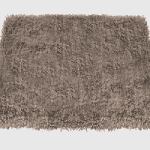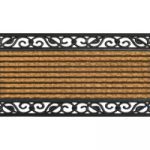The performance bottlenecks in a LAMP website are notably immune to the usual instinctive response, which is to upgrade to extra powerful hardware – extra CPUs, more disk area, and so forth. Incremental increases in hardware performance can’t keep up with the exponential increases in demand for system assets that Apache and the PHP/MySQL mixture generate when they get overloaded. This can occur if your site is hacked or if there is a bug in your caching configuration. Troubleshooting cache issues could be a bit difficult, however there are a few frequent problems you’ll have the ability to look out for.
Adjusting Employee Processes And Connections
This tutorial provides a complete overview of server-side caching. We begin by defining server-side caching and explaining the means it differs from client-side caching. Subsequent, we explore the substantial benefits of implementing server-side caching, including decreased server load, faster web page load occasions, and improved user experience. Then, we cover various server-side caching methods, such as using reverse proxies like Varnish, object caching with Memcached and Redis, and full-page caching.
- WordPress Multisite, as its name implies, is a version of WordPress software that lets you manage two or extra websites from a single WordPress instance.
- This can slow down your site and enhance the load in your server.
- WordPress generates web pages dynamically, meaning that it generates a given web page each time it’s requested (even if the result is the same as the time before).
- The max_size and inactive parameters control the scale and expiration of the cache.
- These steps stop wasted efforts where caches thrash despite ample storage.
- The proxy_cache within the location block instructs NGINX to use the defined cache for this location.
Limit Entry To The Purge Command
You can implement Varnish Cache as a reverse proxy by installing it, configuring it to level to your internet server, and adjusting your net server configuration. To manually purge NGINX’s cache you presumably can delete the recordsdata from the cache directory, but NGINX additionally provides the proxy_cache_purge directive with third-party modules to deal with this extra elegantly. Purposes incessantly updating inventories, product catalogs or financial knowledge need low latency upstream requests as an alternative of reused caches.

WordPress’ enchantment is its simplicity, both for end customers and for implementation. Nevertheless онлайн казино купить, the architecture of a WordPress site presents problems when usage ramps upward – and a quantity of other steps, together with caching and mixing WordPress and NGINX, can solve these problems. You can configure browser caching in WordPress using plugins or by instantly modifying your .htaccess file (if your server is Apache). Pace up your website by using NGINX to serve static information with correct caching.




 Round Rugs
Round Rugs  Wool Rugs
Wool Rugs  Vintage Rugs
Vintage Rugs 


 Carpet Tiles
Carpet Tiles  Carpet
Carpet 
 Embossed Rug
Embossed Rug  Plain Rug
Plain Rug 
 2.5'*4'
2.5'*4'  2'*3'
2'*3'  3'*5'
3'*5'  5*7.5
5*7.5 













 Artificial Grass
Artificial Grass  Mats
Mats 
 Soil
Soil  Fertilizer
Fertilizer  Pesticides
Pesticides